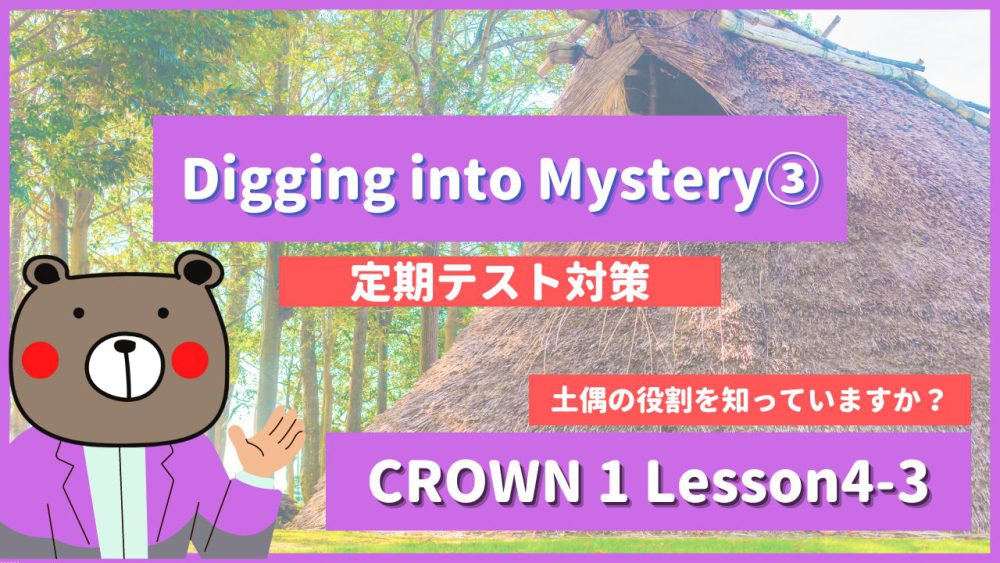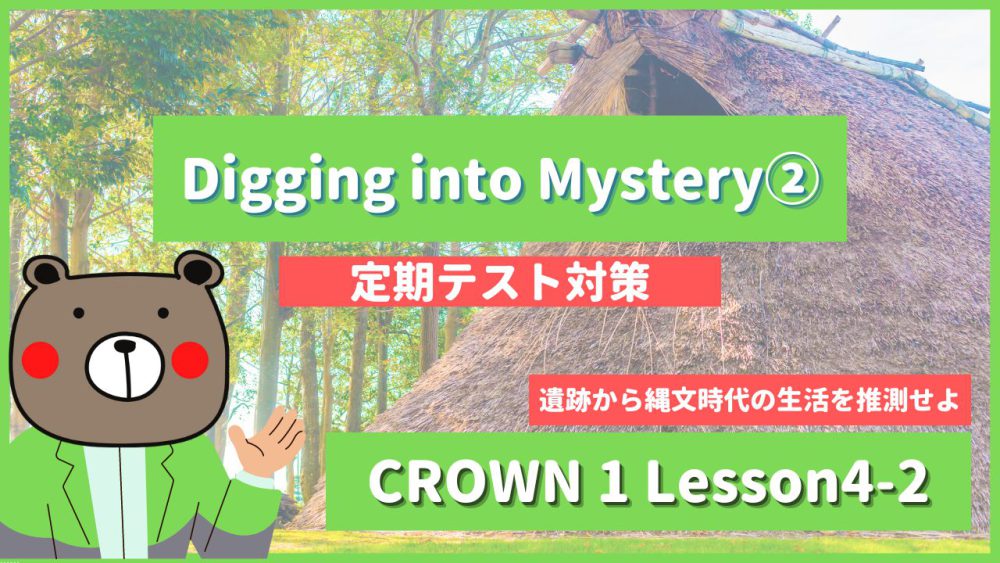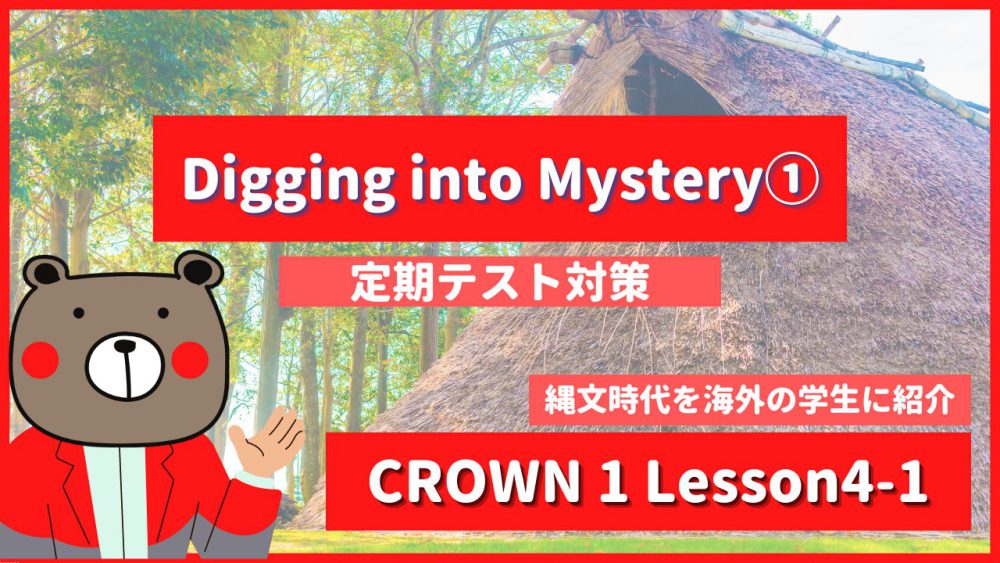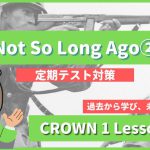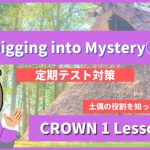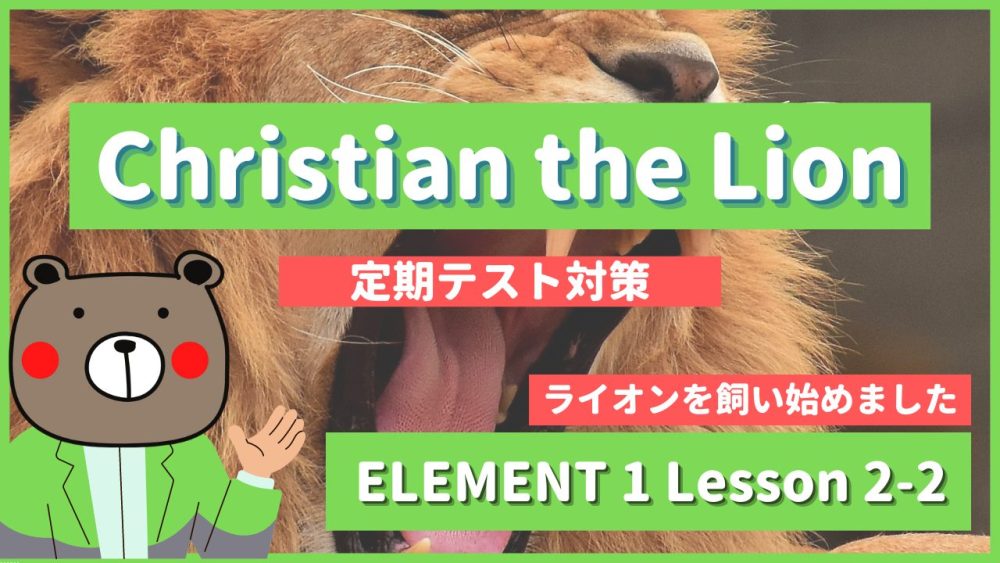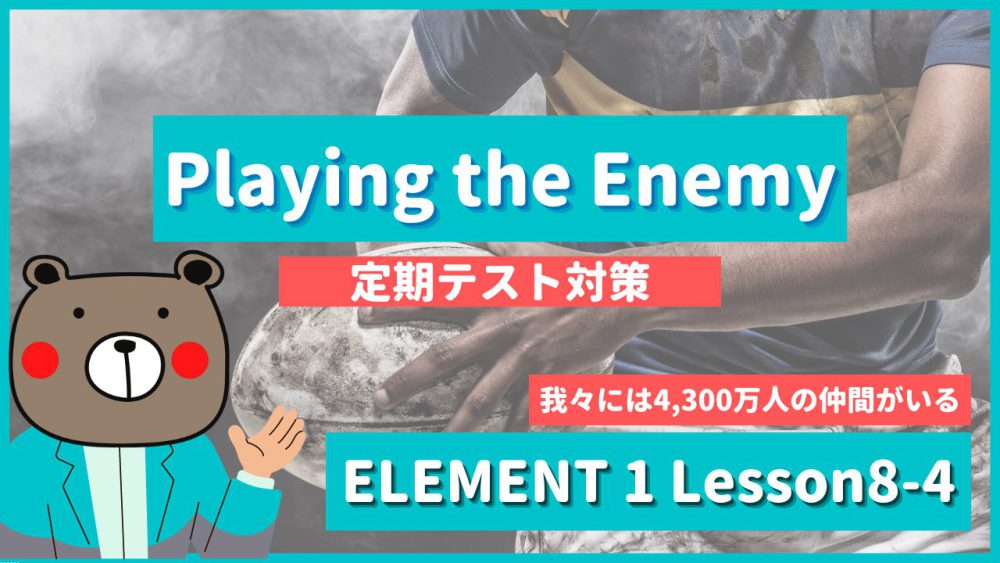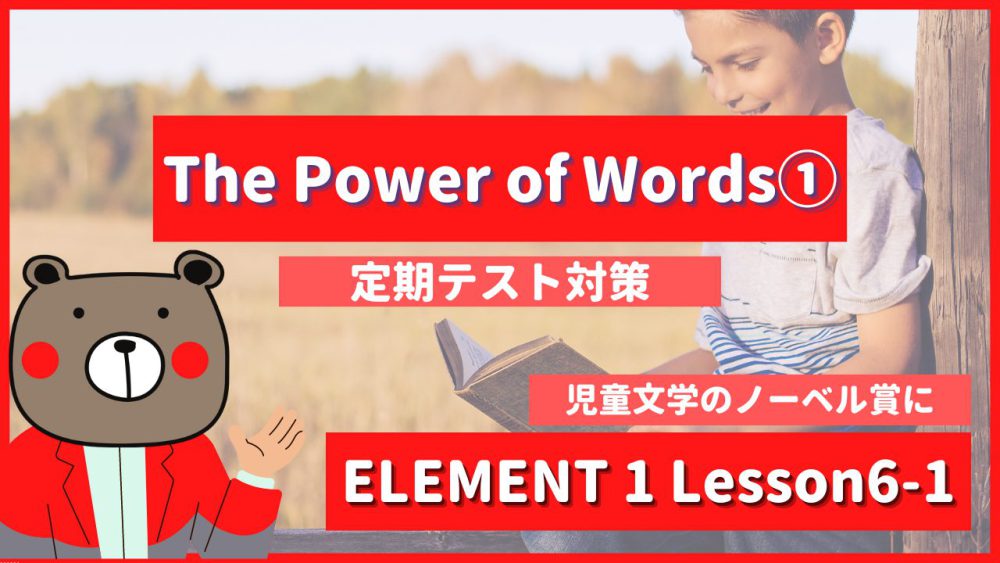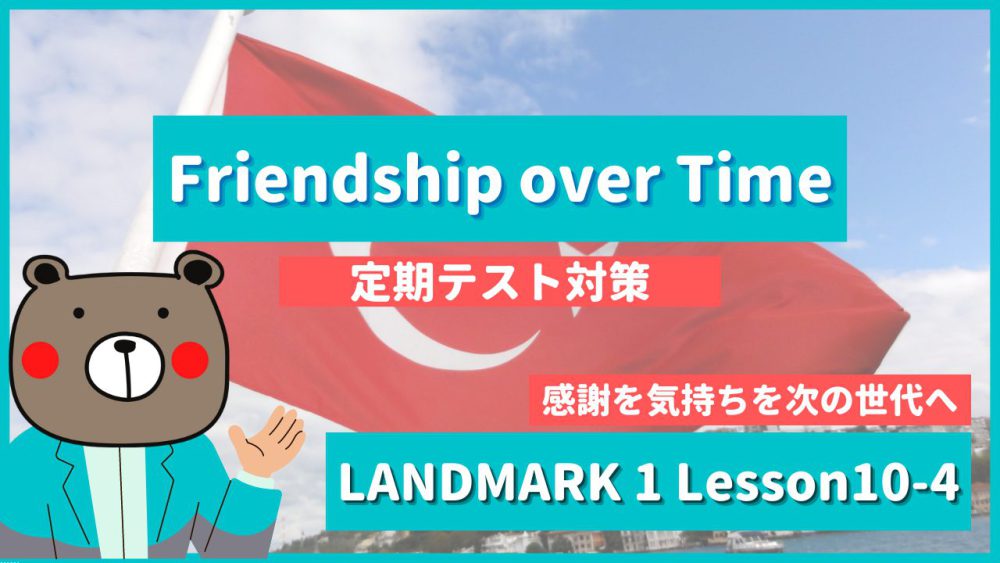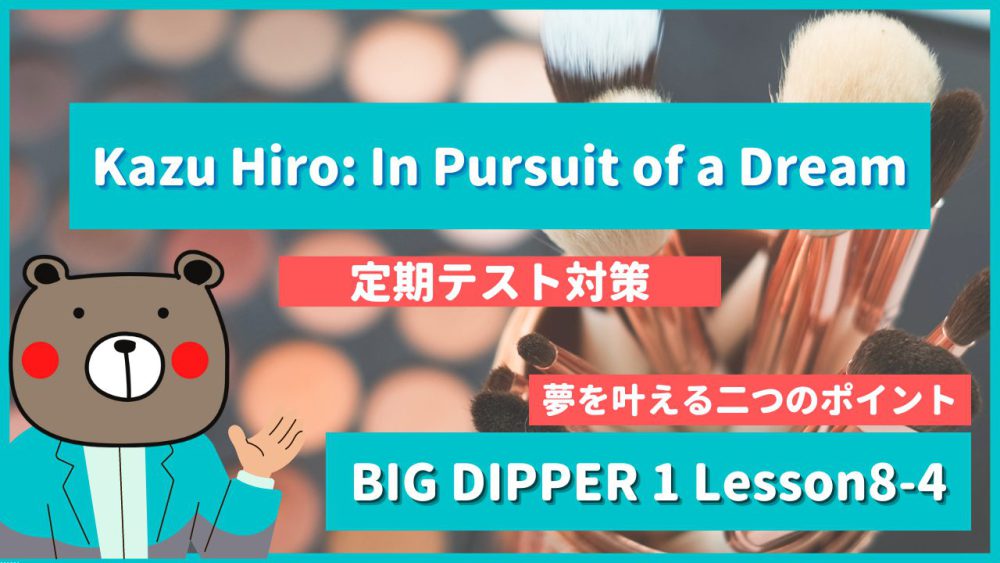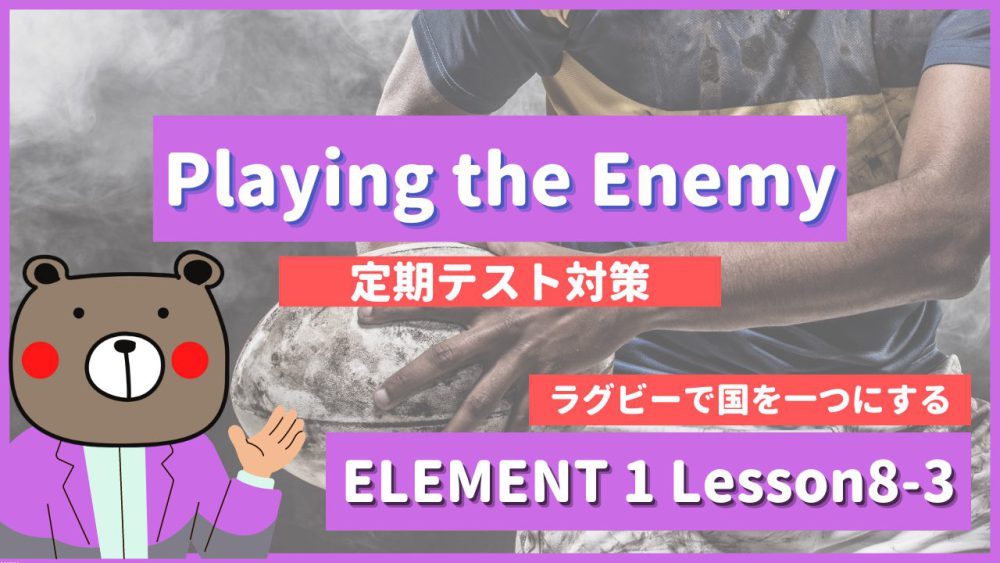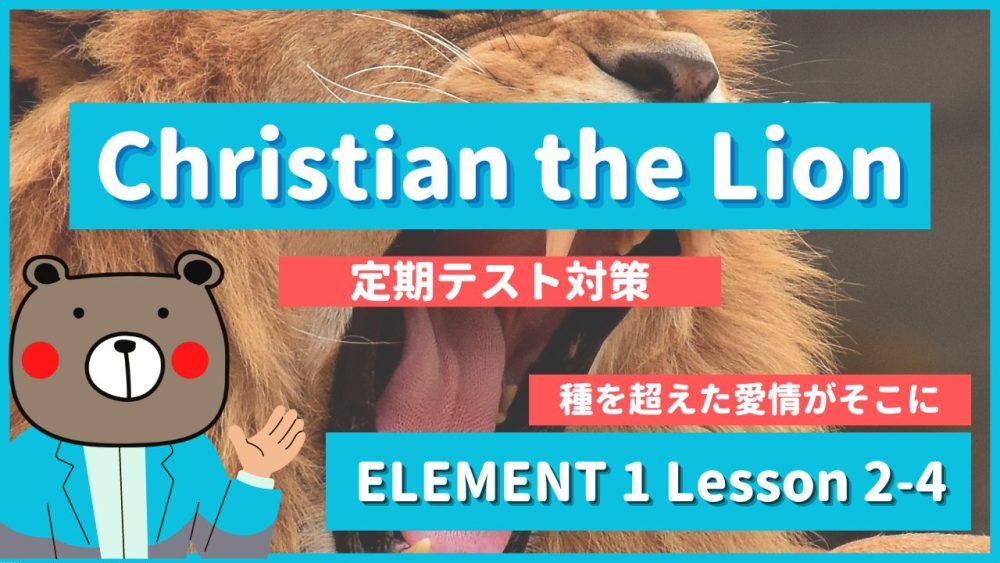▼音声で学びたい方はこちらへ🐻
現在撮影中❗️
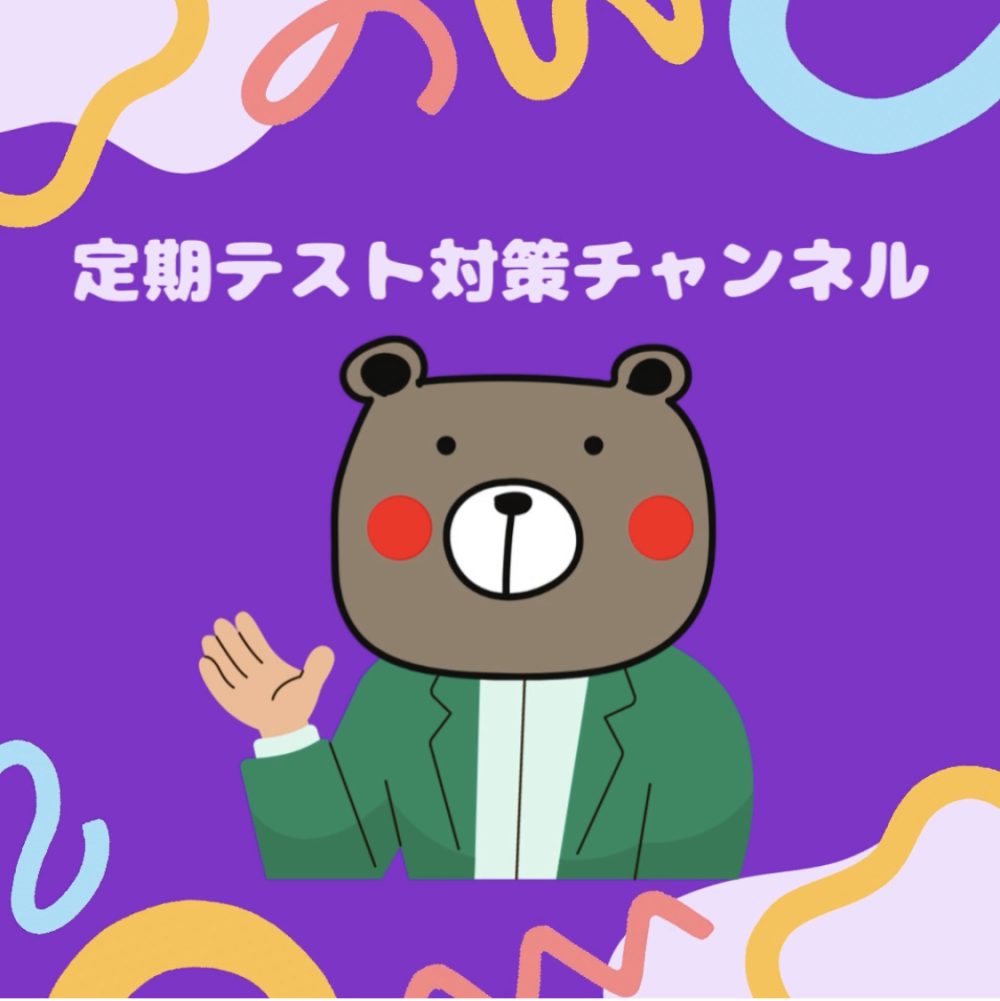
▼CROWN1-高1《Lesson4》はこちらから🐻
- 授業前にひとこと
- 勉強のポイント
- 本文&和訳
- 重要単語
- 重要ポイント
- 【1】Conclusion: bridging the chasm
- 【2】The Jomon culture still exerts great influence on us today.
- 【3】Okamoto Taro, a well-known Japanese artist, created the Tower of the Sun for the Osaka Expo in 1970.
- 【4】It was inspired by the dogu with a heart-shaped face.
- 【5】Yamaoka Nobutaka, a movie director, had spent five years visiting 100 Jomon sites before filming a movie about the Jomon culture.
- 【6】He says, “There is a great chasm separating the Jomon period and us.
- 【7】But as we get to know more about it, we come to see something that enables us to look at ourselves in new ways.”
- 【8】When you look at these dogu, try to imagine that they are looking back at you through 10,000-year-old eyes.
- 【9】You sparked our interest in Australia’s prehistoric art.
- 【10】We hope we’ve sparked your interest in Japan’s.
- 【11】Next year we hope some of you can come to visit us in Aomori.
- 【12】We’ll go together to Sannai-Maruyama.
- 【13】You’ll see the Jomon culture up close.
- 【14】Thank you. If you have any questions, we’d happy to answer them.
授業前にひとこと


今回も、CROWN1-高1《Lesson4》について扱っていきます❗️
Lesson4のタイトルは…🐻
Digging into Mystery
という「海外の高校生に縄文文化についてプレゼンをする」お話です。
ちなみに、このLessonでメインで確認したい文法事項は…
過去完了・過去完了進行形
です❗️
さて、いつも授業前に説明することですが…
⇧に載せてあります『単語・和訳・英作文トレーニング』をテスト1週間前から毎日やってみてください❗️曖昧な理解がなくなり、成績が爆伸びします!!
コミュ英以外の定期テスト対策は?
現代文の定期テスト対策は こちら から
古文の定期テスト対策は こちら から
漢文の定期テスト対策は こちら から
teite channel をもっと活用する


▷ 解説記事のリクエスト
▷ 新着情報のキャッチ
▷ 定期テスト予想問題
▷ オリジナルグッズの販売
ができるようになっています🐻
teite channel の 公式LINEアカウント はこちら
勉強のポイント
①本文は、縄文時代が現代に偉大な影響を与えている点についてアユミがプレゼンする場面であることを理解する。
②単語・重要ポイントをインプットする。
③過去完了・過去完了進行形について理解する。
本文&和訳
テーマ
【4】Conclusion: bridging the chasm
結末:縄文時代と現代の間をつなぐ架け橋
本文
The Jomon culture still exerts great influence on us today.
縄文文化は今日も変わらず私たちにとてつもない影響を与えています。
Okamoto Taro, a well-known Japanese artist, created the Tower of the Sun for the Osaka Expo in 1970.
日本の芸術家としてよく知られている、岡本太郎は1970年大阪万博のために太陽の塔を創りました。
It was inspired by the dogu with a heart-shaped face.
それはハート形の顔をした土偶に触発されました。
Yamaoka Nobutaka, a movie director, had spent five years visiting 100 Jomon sites before filming a movie about the Jomon culture.
映画監督である山岡信貴は、縄文文化についての映画を撮影する前に、5年を100箇所の縄文時代の遺跡を巡ることに費やしました。
He says, “There is a great chasm separating the Jomon period and us.
彼は言いました、「縄文時代と私たちを分けているとてつもなく大きい間があります。
But as we get to know more about it, we come to see something that enables us to look at ourselves in new ways.”
しかし、それについてもっと知るようになるにつれて、私たちは新しい方法で自分たちを見ることを可能にする何かと出会うようになります。」
When you look at these dogu, try to imagine that they are looking back at you through 10,000-year-old eyes.
あなたはこれらの土偶を見るとき、それらが10,000年前からの目を通してあなたを見返していると想像してみてください。
You sparked our interest in Australia’s prehistoric art.
あなたは、私たちのオーストラリアの先史時代の芸術への興味に火をつけてくれました。
We hope we’ve sparked your interest in Japan’s.
私たちも、あなたたちの日本の先史時代の芸術への興味に火をつけたことを願います。
Next year we hope some of you can come to visit us in Aomori.
来年、あなた方の一部が青森にいる私たちを訪ねるようになることを、私たちは願っています。
We’ll go together to Sannai-Maruyama.
私たちは三内丸山遺跡へ一緒に行くでしょう。
You’ll see the Jomon culture up close.
あなたは縄文時代をすぐ間近で見ることになるでしょう。
Thank you. If you have any questions, we’d happy to answer them.
ありがとうございました。もし質問があったら、喜んでお答えします。
重要単語


V : 動詞 , Ving : 動名詞 , Vpp : 過去分詞, O:目的語, C:補語
| conclusion | 結末 |
| chasm | 谷間、裂け目 |
| exert | 〜を及ぼす |
| influence | 影響 |
| well-known | よく知っている |
| expo | 博覧会 |
| inspire | 〜を刺激する |
| separate | 〜を分ける |
| enable | 〜を可能にする |
| get to V | Vするようになる(意思あり) |
| come to V | Vするようになる(意思なし) |
| up close | すぐ間近で |
重要ポイント
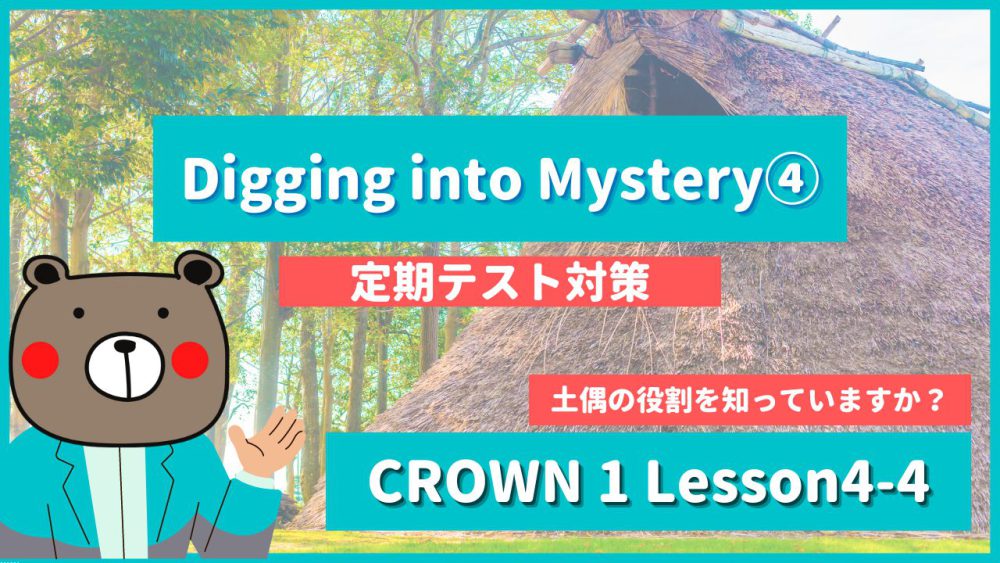

「ピンク」=重要ポイント
▼記号について
V : 動詞 Ving : 動名詞 Vpp : 過去分詞
【 】名詞句・節 〈 〉形容詞句・節 ( )副詞句・節
S:主語 O:目的語 C:補語 M:副詞
【1】Conclusion: bridging the chasm
《和訳》
結末:縄文時代と現代の間をつなぐ架け橋
《重要ポイント》
ここまで執筆完了❗️日々解説を加えていきます!


teite channel の 公式LINEアカウント はこちら
【2】The Jomon culture still exerts great influence on us today.
《和訳》
縄文文化は今日も変わらず私たちにとてつもない影響を与えています。
《重要ポイント》
【3】Okamoto Taro, a well-known Japanese artist, created the Tower of the Sun for the Osaka Expo in 1970.
《和訳》
日本の芸術家としてよく知られている、岡本太郎は1970年大阪万博のために太陽の塔を創りました。
《重要ポイント》
【4】It was inspired by the dogu with a heart-shaped face.
《和訳》
それはハート形の顔をした土偶に触発されました。
《重要ポイント》
【5】Yamaoka Nobutaka, a movie director, had spent five years visiting 100 Jomon sites before filming a movie about the Jomon culture.
《和訳》
映画監督である山岡信貴は、縄文文化についての映画を撮影する前に、5年を100箇所の縄文時代の遺跡を巡ることに費やしました。
《重要ポイント》
【6】He says, “There is a great chasm separating the Jomon period and us.
《和訳》
彼は言いました、「縄文時代と私たちを分けているとてつもなく大きい間があります。
《重要ポイント》
【7】But as we get to know more about it, we come to see something that enables us to look at ourselves in new ways.”
《和訳》
しかし、それについてもっと知るようになるにつれて、私たちは新しい方法で自分たちを見ることを可能にする何かと出会うようになります。」
《重要ポイント》
【8】When you look at these dogu, try to imagine that they are looking back at you through 10,000-year-old eyes.
《和訳》
あなたはこれらの土偶を見るとき、それらが10,000年前からの目を通してあなたを見返していると想像してみてください。
《重要ポイント》
【9】You sparked our interest in Australia’s prehistoric art.
《和訳》
あなたは、私たちのオーストラリアの先史時代の芸術への興味に火をつけてくれました。
《重要ポイント》
【10】We hope we’ve sparked your interest in Japan’s.
《和訳》
私たちも、あなたたちの日本の先史時代の芸術への興味に火をつけたことを願います。
《重要ポイント》
【11】Next year we hope some of you can come to visit us in Aomori.
《和訳》
来年、あなた方の一部が青森にいる私たちを訪ねるようになることを、私たちは願っています。
《重要ポイント》
【12】We’ll go together to Sannai-Maruyama.
《和訳》
私たちは三内丸山遺跡へ一緒に行くでしょう。
《重要ポイント》
【13】You’ll see the Jomon culture up close.
《和訳》
あなたは縄文時代をすぐ間近で見ることになるでしょう。
《重要ポイント》
【14】Thank you. If you have any questions, we’d happy to answer them.
《和訳》
ありがとうございました。もし質問があったら、喜んでお答えします。
《重要ポイント》


これで全て終了です❗️
「CROWN1-高1《Lesson4-4 | Digging into Mystery | p66》」おつかれさまでした🐻
過去完了・過去完了進行形 だけでなく、知らない熟語や構文が出てきたり、単語のレベルも徐々に上がってきて、少し苦戦しているんではないでしょうか❗️
復習&音読するのをお忘れなく!!
①授業前にひとこと、でも話しましたが…
⇧に載せてあります『単語・和訳・英作文トレーニング』をテスト1週間前から毎日やってみてください❗️曖昧な理解がなくなり、成績が爆伸びします!!
最後まで見てくださってありがとうございました!
またお会いしましょう!定期テストがんばれ〜🐻
じゃあね〜、バイバイ!!
